This post will give you an overview of how to record guitar into a computer. If you have an electric guitar and a PC, you know that a world of creative potential lies in getting the two to interact. The first and most obvious question you might have is, how can I get my computer to record and playback what I play on the guitar? This article will highlight some of the various methods and equipment to record electric guitar digitally.
What do you need?
Hardware
An audio interface will likely be your best bet for recording electric guitar. Most budget or starter interfaces have a pair of hi-impedance inputs. A hi-Z connection is perfect for connecting a guitar for recording. The modern home studio audio interface has become the simple and intuitive solution to translating sounds made on a physical medium (the strings vibrating over the pickups) into the digital realm.
Software
You’re also going to need some software to receive and manipulate the sound on the computer’s end, but this is where your options begin to multiply. There are almost endless possibilities for what you can do once you process a signal, so this is where you have to make some choices. Within the scope of this article, we’re going to focus on recording the guitar through a DAW.
DAW
A Digital Audio Workstation (DAW for short) is many things. A simplified explanation is that it is like an old-style multitrack tape recorder and mixing board put into one software package. A DAW allows you to record on horizontal left-to-right time-based tracks. Record multiple tracks at the same time, or you can overdub new tracks over previous ones.
There is a vast array of DAWs. If you’re starting to record music on a PC, some PC DAWS to consider include:
- Ableton Live
- Acoustica Mixcraft
- AVID Pro Tools
- Cakewalk by BandLab (free)
- Cockos Reaper
- Steinberg Cubase
- PreSonus Studio One
Which DAW to choose is ultimately up to you and your wants and needs. Do you want to prepare for professional recording environments and integrate your projects with outboard hardware and consoles at studios? Do you want to incorporate the guitar in a live performative digital space where you can loop, twist and affect different aspects of sound ad infinitum? Ableton Live may be your ticket. Perhaps you want to advance your playing and listen to what you record to fine-tune your guitar skills? The software mentioned above can effortlessly do that, but you may not want to spend the money if your needs are simplistic. FL Studio, Presonus Studio One, or Cubase may be more suited to your needs.
Even the most simple modern DAW is leaps and bounds more powerful than even the most sophisticated recording technology involved in recording so many timeless records made in the pre-digital era. We are currently in the golden age of home recording, and nothing should stand in your way of achieving your vision when it comes to recording. The tools are already out there.
Methods
How exactly are you going to run the signal from your guitar or amp to digital recording? Ultimately, they all require an audio interface. Presonus (the Audiobox) and Focusrite (the Scarlett) sell quality starter or budget interfaces. The higher end of the starter range includes the Apogee One and Universal Audio Apollo Twin. These will typically connect to the computer via USB. Once you have an interface and choose a DAW, you can use a few different methods to record guitar. Let’s take a look:
Recording an amp with a microphone
The old-fashioned way. This will get you the rawest, realistic sound, but this will also depend on the amp and mic selection at your disposal. Microphone placement, the room, and the signal chain from mic to DAW will all have an impact on the quality of the recording.
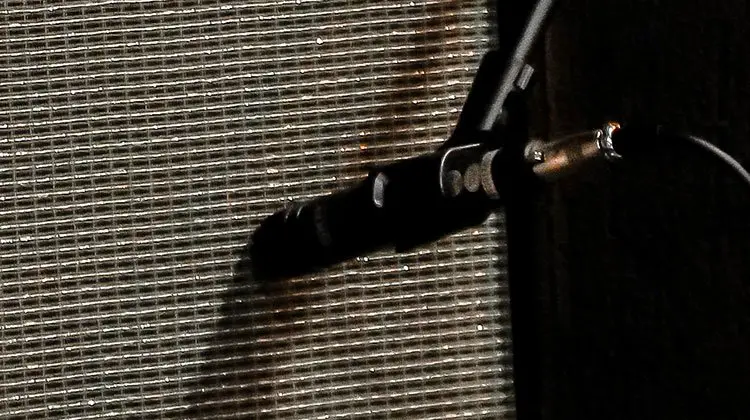
If everyone could do it this way, they would, but the price and the sheer inconvenience of mic-ing amps up in a studio make the amp sims more appealing in today’s world. If you could somehow record a large amp with an SM57 into a cheap interface and not annoy your neighbors or other people living with you, an element that you still might be missing out on is the preamps older records used. The lack of a Neve or tube preamp will give a sheen of digital clarity you may or may not want. These are all variables that are worth considering.
Direct into audio interface + amp sims
A decade ago, amp sims were widely considered unrealistic sounding and thin. They almost always lacked the punch of a real tube or solid-state amp. Today the story is quite different. Almost all the major amp sim companies provide quality amp simulators that meticulously model amps, cabinets, pedals down to the circuit design, and all the subtle irregularities that people have spent the last fifty to sixty years talking up.
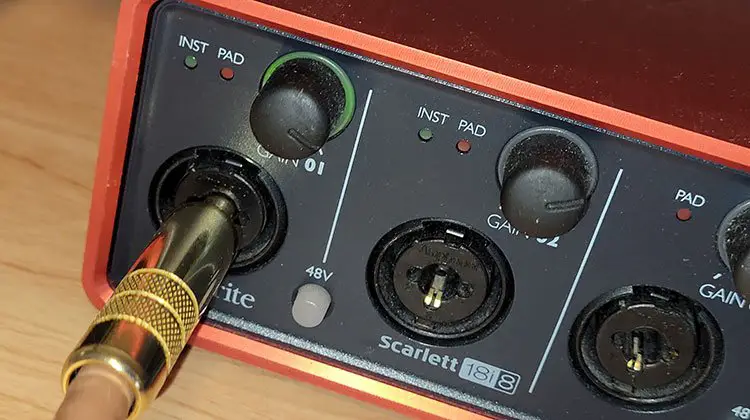
The most common way of using an amp simulator when recording is going directly into an audio interface, then record-enabling a track with the input set to the input on the interface, having the amp sim act as an insert plug-in on the track. Typically you would run an instrument quarter-inch line cable from the guitar into the interface Hi-Z inputs, record-enable the track with an amp sim plug-in inserted in on the track.
Popular amp sim plug-ins include Bias Amp, AmpliTube 5, Scuffham S-Gear, and Guitar Rig 4. They’re all well regarded, and there’s plenty of debate over which does amp simulation the best.
Amp simulator pedal
There have been a handful of amp sim pedals dating back into the 80s and 90s. Often ridiculed for lacking the quality of a real amp, the digital fake-ness of these forgotten now-cheap amp sims have been used by artists seeking something different and artificial. Nine Inch Nails’ Trent Reznor was an avid user of the ZOOM 9030 digital amp sim unit and would then send that chain through further processing to build walls of sound.
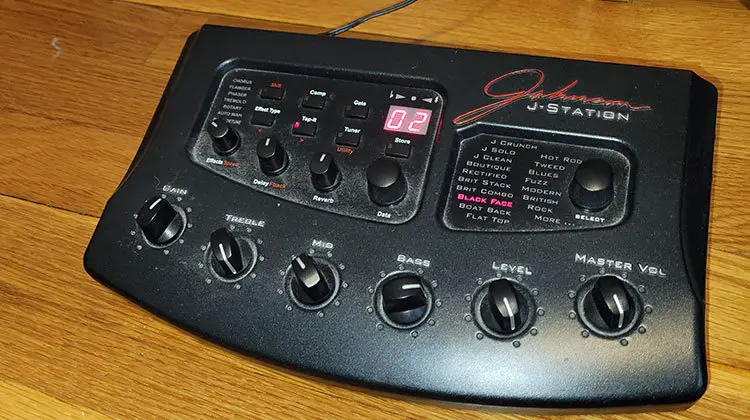
Nowadays, we have amp sims like the Line 6 Helix system, which has won acclaim and been described by many amp sim doubters as one of the most realistic amp sim suites available. The fact that they sell it as a standalone unit in addition to the plug-in software makes it even more powerful. It has a modular design where you can build your pedalboard, amps, cabinets, anything you could want. The Helix system will cost you, but there are several more moderately priced versions.
Recording an amp via line out or direct out
The line out or if available direct out on a guitar amp will essentially send the signal out of the preamp and bypass the power amp so you can send the line signal straight into a PA system or your DAW.
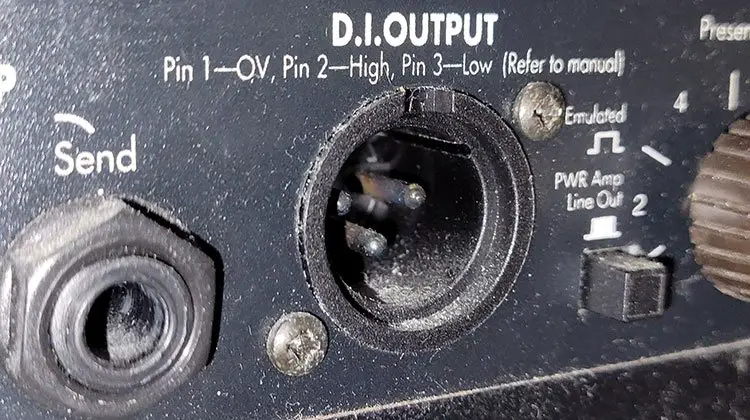
Please note this section is referring to the line out and not the speaker out. Connecting the speaker out to your audio interface will not work and could cause damage to your equipment or even fire. If you only have a speaker out on your amp see the next section about using a load box.
Often new amps have a line out with speaker emulation. This output can be sent right into the interface and recorded the same way it would be feed to a PA system to amplify the signal through the sound system.
Older line outs probably won’t have speaker emulation, but this can always be added in the DAW with an amp sim plug-in. Recording this way can be useful if you want to use your amp’s preamp section for gain, eq, reverb, or other sound-sculpting adjustments before going into an amp sim in your DAW or interface.
Recording an amp with a load box and speaker simulator
Load boxes replace a speaker cabinet. A load box can be an indispensable tool in the home studio. It will load the signal output from the amp speaker to a line-level used for a standard interface or a PA system.
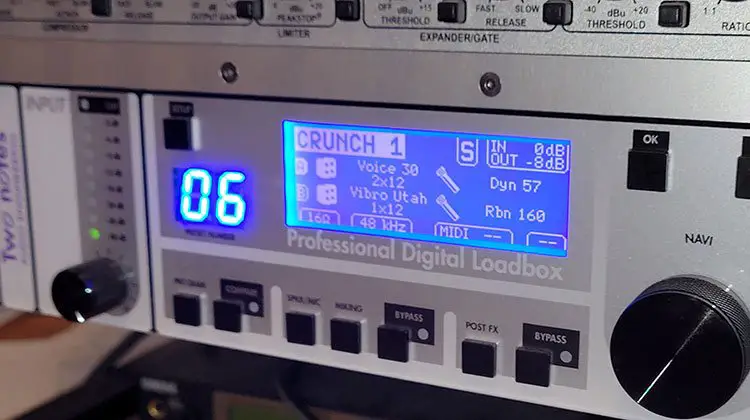
A load box like Two Notes Torpedo provides you with the load box and cab simulators through their DynIR Impulse Response technology. This combination allows the guitar player to use their amp to drive the signal through modeled speaker cabinets. You can get the same kind of amp feel and response you’re familiar with, with a whole variety of new tones with the cabinet modeling IR technology. This kind of setup can be used to play your amp with headphones or send it through an interface to a DAW.
In addition to the Two Notes Audio Engineering Torpedo Suite, Universal Audio has introduced the OX, which features a similar design and sports an attenuator and speaker cabinet simulator. Both of these options allow you to play your amps and quiet levels (even through headphones) and record with modeled amp sims. This option is typically preferable to the previous method of recording through the preamp unless you specifically want the modeled speaker emulation on the line out of your amp.
Conclusion
Outlined here are a few options you have to record a signal from your guitar into your computer. You’ll need a guitar, computer, interface, and DAW. From there, you can use the guide above to get a better sense of what kind of recording you’d like to do.
- Record with a microphone and amp
- Record directly into the interface and use an amp amp sim
- Use an amp sim pedal to record into the interface
- Play through an amp and use the line out. (may have speaker emulation or may need to add in DAW)
- Play through an amp amp and use a load box and use IR cabinet simulation
There are many options available, and it’s important to find out what will work best for you.
